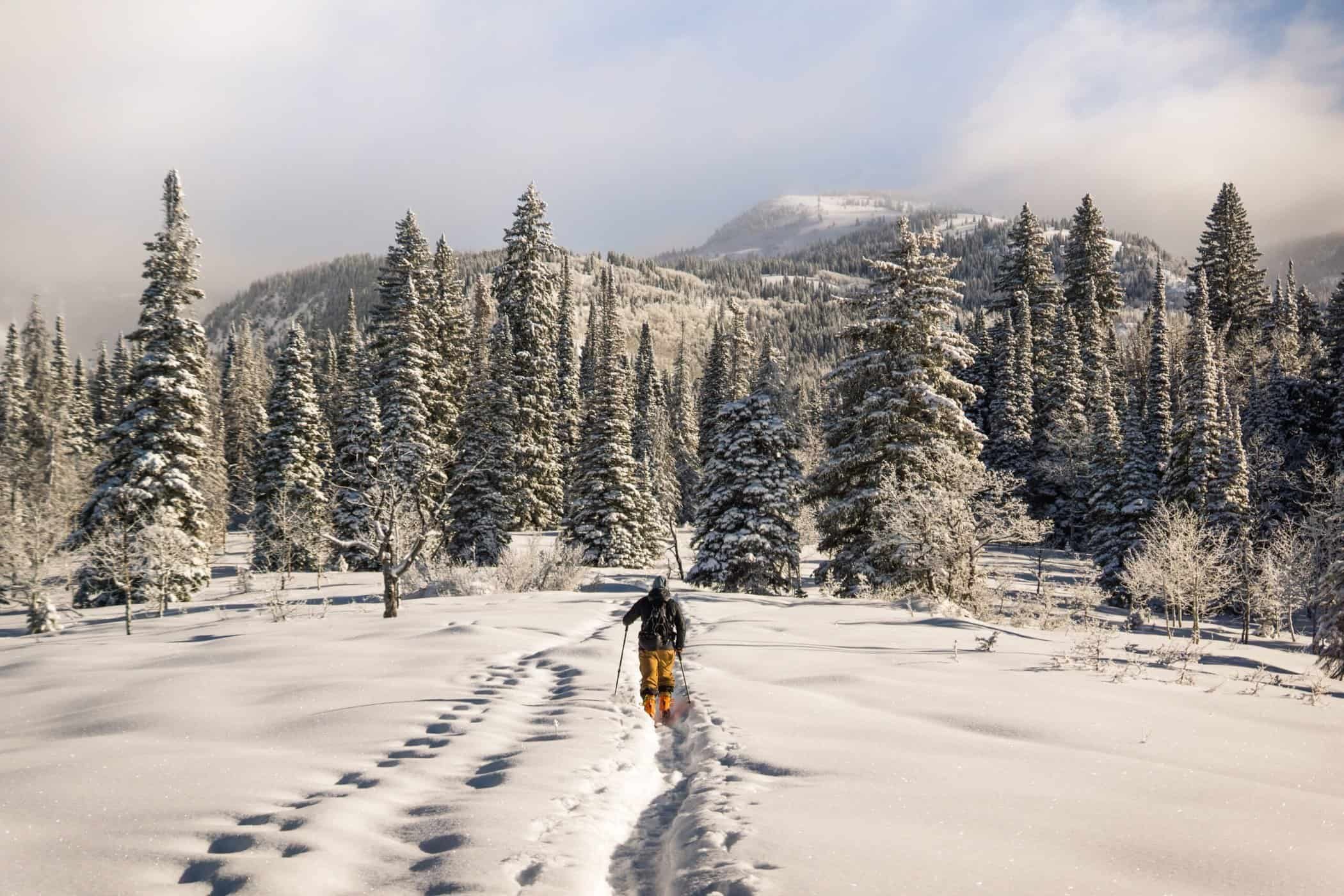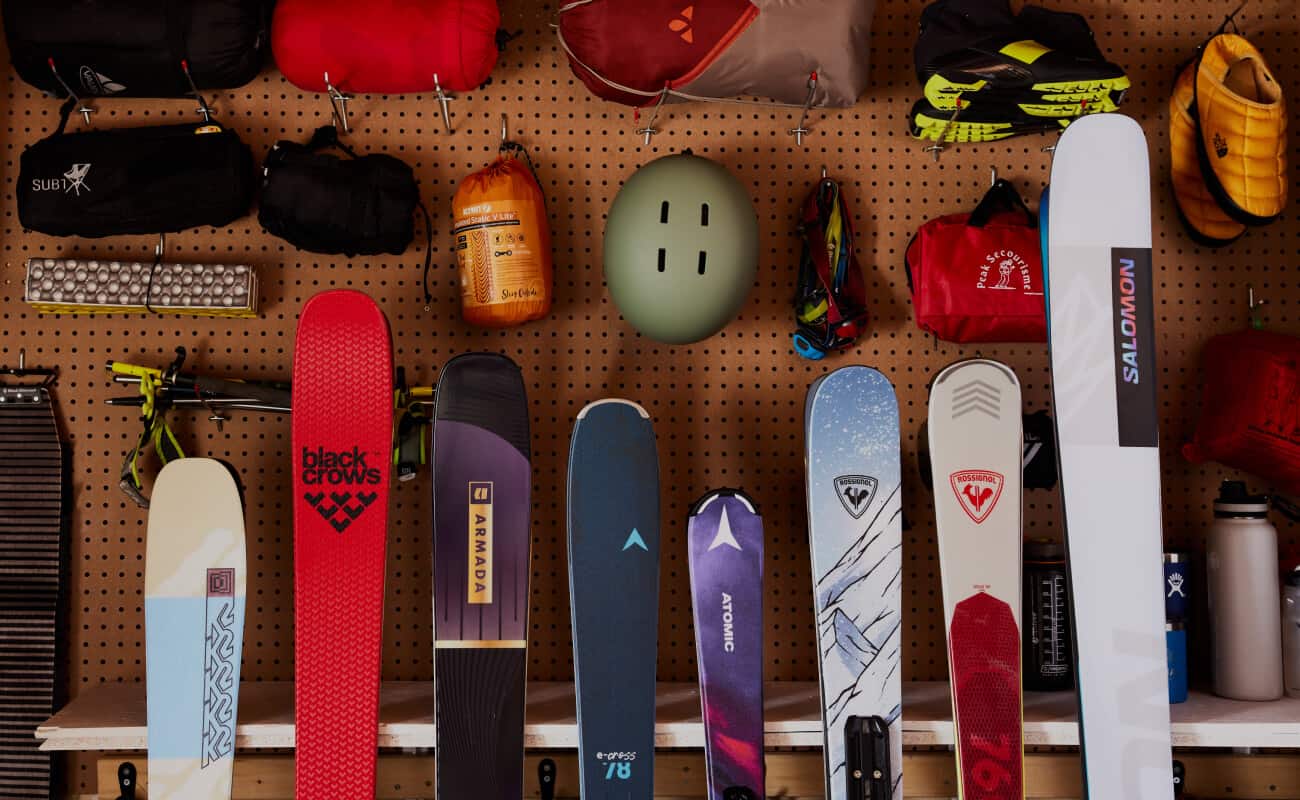This discipline is fun and flowy, with an emphasis on powder and the terrain park. In order to get that good, however, you’re going to need the best snowboard for beginners.
With a fantastic selection of beginner boards, it’s never been easier to find the right option to meet your needs and style. A good beginner snowboard will not only help you learn the basics of this dynamic winter sport, but grow with you as you gather skills. Interested? Check out our list of the best snowboards for beginners below.
Snowboard Selection
These best beginner snowboards are some of the best learning boards out there. Learning basic riding skills on these boards should help you get comfortable quickly. Over time—and with a little bit of patience—these boards will take you from bunny hill to black diamond.
Best Beginner Snowboard Overall
Flex: 4 (medium soft flex)
Profile: Rocker
The Head Transit Snowboard is our best beginner snowboard because of its forgiving flex and soft and surfy ride setup. With a catch-free rocker profile, this board is ideally suited to start a riding career. The flex and forgiving nature of this beginner board is great for skill building, which includes turning, playing with speed, and dabbling in the terrain park.
Price: 0.00$
Brand Name | Product Type
Best Beginner Snowboard for Toddlers/Young Kids
Flex: 2 (soft flex)
Profile: Slight rocker/camber/rocker
I’ve been a snowsports instructor for almost a decade, and the youngest beginner snowboarder I’ve ever seen was less than two years old. If you live near the snow and you want to get your kids started on a riding career, the Burton Riglet Snowboard is super forgiving, has a rocker profile at the ends to help teach switch, and the base is convex—meaning it’s incredibly hard to catch an edge.
Price: 0.00$
Brand Name | Product Type
Best Beginner Snowboard for Kids
Flex: 2 (soft flex)
Profile: Camber
Ideally suited as a beginner snowboard for kids from roughly 5 and up, this generalist makes learning easy. Featuring a soft flex, fully adjustable bindings, easily digestible price, and a saucer shape that teaches control and balance, the Burton After School Special Snowboard is a kid-friendly beginner board that helps you build core skills.
Price: 0.00$
Brand Name | Product Type
Best Beginner Snowboard for Early Teens
Flex: 3 (soft flex)
Profile: Hybrid Camber Pop
With its playful design, the HEAD Defy Youth Snowboard is a great beginner-intermediate board to learn on. The sturdy wood core will last multiple seasons and enable a wide spectrum of learning, from simple things like stopping and practising falling leaf, to landing your first tricks.
Not only is the board a great learner, but it can grow with the rider, guaranteeing increased confidence and ability while providing the support necessary to accompany you into the park and onto steeper terrain.
Price: 0.00$
Brand Name | Product Type
Best Beginner Snowboard for Women
Flex: 4-5 (medium flex)
Profile: Rocker/Camber/Rocker
While it can be fully utilised by an intermediate or advanced rider, the Burton Rewind Camber Snowboard is actually a friendly way to lock in a beginner board and have it grow with you for years.
The twin shape helps with learning to transition between regular and switch, the symmetrical shape is excellent for balance, the board offers decent edge control, and the mounts are compatible with all major bindings. Once you get the basics down, this board is also loaded with pop, making forays into the terrain park friendly and fun.
Price: 0.00$
Brand Name | Product Type
Best Beginner Snowboard for Freeriding
Flex: 3-6 (medium flex)
Profile: Camber
The Burton Blossom Camber Snowboard is a product of creativity and freeride fun. The twin profile gives you stomp and spin and lets you ride as you like. Perfectly symmetrical, this versatile board gives you a balanced ride while helping you transition between regular and switch.
Fun and poppy in the park, this board is so balanced that it can handle groomers, mixed terrain, chop, crud, slush and everything in between. The edge cut also encourages edge control and turn shape.
Price: 0.00$
Brand Name | Product Type
Best Beginner/Intermediate Snowboard for Men
Flex: 6 (medium flex)
Profile: Rocker/Camber/Rocker
While Jones is known for their excellent advanced boards, the Mountain Twin Snowboard is an equal-opportunity product. This all-mountain board lets you take it everywhere, and the directional twin shape lets you cruise through the trees like it’s no one's business.
The key to this board is its playfulness, which invites further learning, despite a flex that isn’t the softest in the world. Once you centre your balance and begin to dabble in terrain park features, mixed terrain and trees, you’ll start to see how far this board can take you.
Price: 0.00$
Brand Name | Product Type
How to Choose a Snowboard
Before choosing your first beginner board, make sure it’s the right one for you by checking the following points.
Board Length
Your board length corresponds to your weight and height. In general, a longer board will weigh a little more, and more material is harder to control. For a beginner board, it’s best to go shorter.
The general rule of thumb is to stand a snowboard vertically next to you and look in a mirror. The board should reach somewhere between the top of your shoulders and the top of your head. Beginners will want a beginner board that’s much closer to the shoulder line.
Types of Snowboards
Snowboards come in a few different shapes with associated pros and cons.
- Directional shape: Typically has a short tail and a long tip. This design helps the board ride better in one direction (hence the name). It is an asymmetrical shape, so it’s less for freestyle and more for powder slicing or high-speed carving.
- Directional twin shape: A symmetrical shape with a small kink. The stance is usually set back a little farther than a true twin setup, and the overall profile may vary between models. These are versatile boards that can accommodate freestyle options while still providing enough directional design to get into bigger mountain lines.
- True twin shape: This is a popular design for beginner snowboards and park riders because the symmetrical shape allows you to flip effortlessly between regular and switch riding. A true twin with some pop will be easy to get airborne, work on turns, ride switch and improve balance.
Flex Rating
The flex rating is a numeric system used to indicate how stiff or soft a board is. A soft flex is easier to maneuver and allows for more flexibility, which is great while learning. A nice medium soft flex gives more support while still allowing for a good degree of flexibility. As you progress through the stages of riding, you’ll increasingly want stiff boards, which support higher speeds and skills. However, beginner to intermediate riders will enjoy a flex rating between 2 and 6.
Buy the Appropriate Gear
Many beginner snowboards come with pre-mounted bindings, but that isn’t a universal statement. If you get a beginner board without bindings, make sure you select some that are geared toward beginners and ones that are compatible with the mounts on the beginner board you’ve selected.
You’re also going to need snowboard boots, jackets, winter clothes, a helmet, goggles and gloves. Make sure you are outfitted for the activity, the weather and whatever visibility you’re likely to encounter (low light, half-and-half or bright sunshine).
FAQ
Q: What size snowboard should a beginner use?
A: Beginners should err on the smaller size, opting for a beginner board that (when standing vertically) reaches to around the top of their shoulders. A rider's toes, when in the bindings, should reach about a CM or two over the edge of the board.
Q: What are the 4 types of snowboards?
A: In addition to shape and profile, there are types of snowboards. For beginners, you’ll either want an all-mountain board or freestyle board. There are also powder boards and splitboards for backcountry adventures.
Q: How much should I spend on my first snowboard?
A: For your first beginner board, you should be spending anywhere from 100-700 dollars, with a sweet spot in the 250-500 range. The lower end of that spectrum is reserved for kid-oriented boards and steep sales.
Conclusion
Mastering snowboarding takes time and dedication. Sometimes, it’ll take years for you to get a concept or nail a trick. Stick with it and stack advantages when you can; the best beginner snowboards are tailor-made to help accelerate learning while remaining forgiving enough to help you build your skills.








